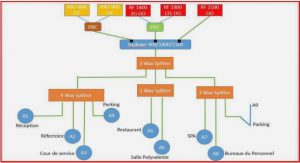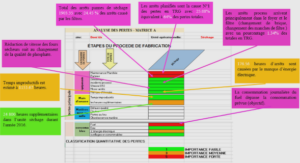Introduction
Mathematical modeling plays a key role in the technical development of PEMFCs since it can unveil a number of features about the performance of the device and how to enhance it. GeneraIly, PEMFC modeling methods can be fallen into two categories of steady-state and dynamic. Each category has its own advantages, disadvantages, and more importantly its own application. Depending on the application, one chooses the suitable group. Regarding the EMS design, which is the main focus of this work, steady-state models are usually used to devise the strategy [39]. This choice is firstly due to the fact that fuel cell system has a slow dynamic and will be exposed to steady demanded power. Secondly, in hybrid systems, the energy storage devices, such as battery, usually deals with the high dynamic. Therefore, a suitable PEMFC steady-state model needs to be selected for the purpose of EMS design in this work. However, since the proposed EMS of this work is an adaptive strategy based on recursive filters, the filters need a reference input signal to update the steady-state model parameters. In this regard, an emulator, which is a dynamic PEMFC model, needs to be designed to provide the filters with the necessary inputs.
This chapter starts with providing the information on the utilized fuel cell system, which is a low speed vehicle. Subsequently, it outlines the selection of a steady-state model along with the integration of an adaptive filter to update the model online. Then, the obtained results of online modeling are discussed. Moreover, the development of an emulators is described in details and the outcomes are evaluated. This chapter finishes by giving a synopsis of the main points of each investigated section.
Power train model
In this work, the developed HIL emulator can be considered as a full scale HIL emulator for Nemo vehicle, which is a laboratory-scale vehicle. The specifications of this vehicle are listed in Table 2 1 .
Battery and De-De converter models
A simple electric circuit based battery model is used to describe the battery pack ofNemo vehicle [42]. Figure 2.1 shows the equivalent circuit, which is composed of a configuration of series resistor (Rl ) and a parallel resistor (R2 ) with a capacitor (C) [42].
PEMFC modeling
The existing PEMFC models in the literature can be categorized into three groups of white box, known as mechanistic, black box, and grey box, known as semi-empirical, as shown in Figure 2.2 .
Mechanistic models mainly focus on clarifying the phenomena happening inside a single cell and are based on algebraic and differential equations. These equations describe the occurred processes related to thermodynamics, electrochemistry, and fluid mechanics. Mechanistic models require a wide knowledge of influencing parameters such as transfer quantities, humidity level, membrane thickness, etc. to mimic the behavior of the PEMFC over different operating conditions. However, fuel cell is a multiphysics system and a number . . . . of factors, such as degradation and operating condition fluctuation, can cause performance drifts in this system. In this regard, design of a complete mechanistic model considering aIl of the performance drifts is very difficult, time-consuming, and still a study limitation. As opposed to the mechanistic models, black box models are based on inputs and outputs data without any information about the internaI workings and physical interpretation of the parameters. Since the computational time of black box models is very low, they have been used in many studies for online vehicular applications. However, the dependability of such models decreases when facing new operating conditions, which have not been included in their training process. The last category of PEMFC modeling belongs to the semi -empirical methods, which are considered as an intermediary between mechanistic and black box types.
Semi-empirical models are usually formed by combining the physical relationships with sorne experimental data. They describe the electrochemical behavior of a PEMFC by imitating the polarization curve, which is a useful approach for both single cell and stack modeling. One of the practical applications ofPEMFC semi-empirical models is in the field of EMS design. As mentioned before, these models provide remarkable data on the polarization curve effects, such as cell reversible voltage, and activation, ohmic, and concertation voltage drops, which are very useful to investigate the relevance of the results for fuel cell researchers. Moreover, by having the polarization curve, extracting the power curve will be very convenient and it can be used in the design of an EMS. Semi-empirical models can also become adaptive easily, which will be discussed hereinafter.
Semi-empirical model
In the light of the explained PEMFC modeling methods in the previous section, semiempirical models seem to be fitted for EMS purposes. Several semi-empirical models can be found in the literature [44-46]. Among them, the model proposed by Amphlett et al. has been suggested for EMS purposes in a number of different manuscripts. This model has a good mechanistic background, so it has been used in many studies [35, 39]. The other available semi-empirical models may also perform the same as this model, however, they have not had this wide application in the literature.
The proposed electrochemical PEMFC model by Amphlett et al. is for a number of cells connected in series and assumes the same behavior for aIl the cells. In this model, the output voltage ofthe PEMFC (VFd is perceived as the sum of the reversible cell potential (ENernst) and three voltage drops, namely activation (Vact), ohmic (Vohmic), and concentration (\’con). The general formulation ofthis model can be given by:
The discussed electrochemical PEMFC model has eight pararneters to be identified, which are listed in Table 2 1 . As previously discussed, a PEMFC system experiences sorne performance drifts during its lifetime. These drifts are because of degradation phenomenon, which happens slowly over time, and the influence of conditions which are not included in the model such as humidity. In order to take these effects into account, the model pararnetersneed to be updated online to adapt the model to the real state of the PEMFC system. The reported ranges of the listed pararneters in Table 2-1 have been collected from the available researches in the literature [35, 47]. That is to say, using a proper initial value is necessary for having satisfactory results while using the adaptive filters, especially when sorne of the model pararneters have physical interpretations. In this regard, a preprocessing of data is suggested to avoid a long convergence time or divergence in the pararneters and to get close to realistic results. The pre-treatrnent is performed by the Curve Fitting Toolbox™ of MATLAB software. This toolbox uses the least square methods to fit the data. Fitting requires a pararnetric model, which can relate the real data to the predictor data. In this work, the employed fuel cell model is linear in coefficients. The least square method minimizes the surnrned square of the difference between the observed and the estimated value. The employed experimental data in the preprocessing stage cornes from the conducted test for obtaining the polarization curves of the fuel cells, which is a proper representative of its behavior. This initialization method has shown that it can reach stable pararneters in 400 seconds [47]. This time is acceptable for the FC application, since the variations in the performance of the FC are slow (in order ofhours).
Resistor measurement
In this work, CUITent interrupt test has been used as an electrochemical technique to obtain a range for the resistor variation with regard to CUITent and temperature [41-44]. This range can be used as reference to validate the estimation result of the internaI resistor (Rinternal) of the PEMFC. The practicality of this method for measuring the resistor of a PEMFC stack has been already studied in [47-49]. CUITent interrupt test measurement is based on the rapid acquisition of the measured voltage, after interrupting the CUITent in the PEMFC. The fast data acquisition is necessary to separate the ohmic loss from the activation loss, which disappears faster than electrochemical losses after CUITent interruption. Therefore, the ohmic loss can be obtained from the difference between the voltage measurement immediately before and after the interruption.
In this work, the steps for conducting the current interrupt test is completely pursuant to [47]. One of the main advantages of the CUITent interrupt test compared to other electrochemical methods is the straightforward result analysis. However, the measurement needs to be done with a fast oscilloscope to exactly catch the point in which the voltage Jumps.
Table 2-2 presents different CUITent levels and their cOITesponded temperature in which the interruption test has been performed. It should be noted that the PEMFC has been allowed enough time to achieve a stable temperature for each current level before doing the test. The CUITent interrupt test has been performed in a forced convection condition where the fans of the PEMFC worked with a constant dut y cycle of 34%.
|
Table des matières
Résumé
Abstract
Acknowledgments
Contents
List of Tables
List of Figures
Chapitre 1 – Introduction
1.1 Motivation
1.2 Literature review
1.3 Objective
1.4 Methodology
1.5 Thesis outline
Chapitre 2 – Modeling and Online Identification of a Fuel Cell System
2.1 Introduction
2.2 Power train model
2.3 Battery and DC-DC converter models
2.4 PEMFC modeling
2.4.1 Semi-empirical model
2.4.2 Resistor measurement
2.4.3 Online parameter identification
2.4.4 Results and discussion
2.5 Emulator design
2.5.1 Dynamic modeling
2.5.2 Model calibration
2.5.3 Results and discussion
2.6 Synopsis
Chapitre 3 – Energy management strategy design
3.1 Introduction
3.2 Multi-stack fuel cell system configuration
3.3 Energy management strategy
3.4 Results and discussion
3.4.1 Scenario 1
3.4.2 Scenario 2
3.4.3 Scenario 3
Chapitre 4 – Conclusion
Reference
![]() Télécharger le rapport complet
Télécharger le rapport complet






